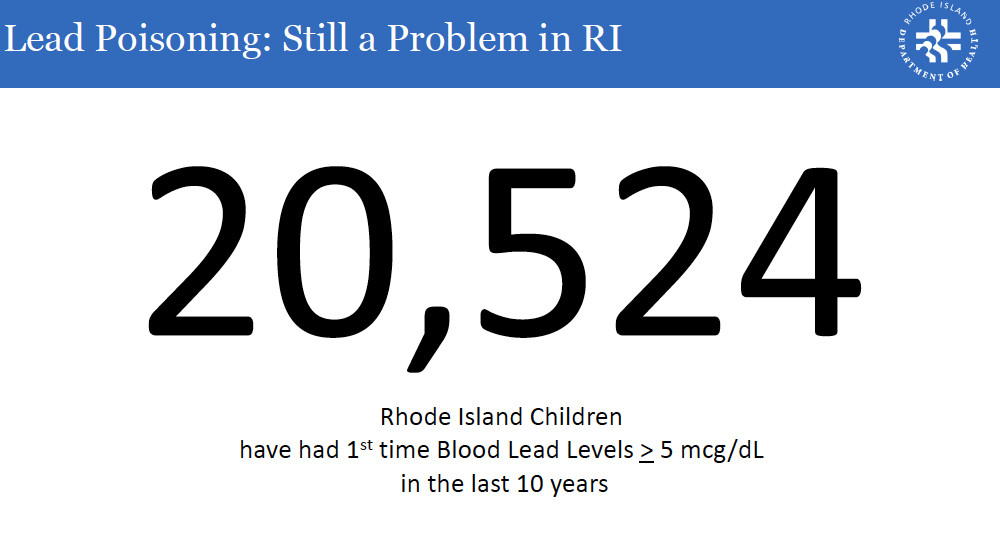Placing at risk children at risk?
Public discussion at the Jan. 29 meeting of the Children’s Cabinet raised concerns about an alleged waiver being sought for some DCYF home placements from state lead regulations
At a time when home sales and prices are soaring, will the real estate industry in Rhode Island be willing to step up to the plate and invest in lead removal programs to prevent the next generation of childhood lead poisoning?
PROVIDENCE – There were few surprises in the four presentations about lead poisoning in Rhode Island at the Jan. 29 meeting of the Children’s Cabinet. They focused on the lead hazard reduction program by Rhode Island Housing, and then on the continuing implications of lead poisoning in Rhode Island children, a child outreach screening update, and a report on the lead safe certification program by the R.I. Department of Health.
The findings by themselves were not “shocking,” given how many in the state have seemingly become inured to the damages being done by lead poisoning to children:
• In 2016, 842 children were newly identified with elevated blood lead levels above the current standard for lead poisoning, above 5 micrograms per deciliter.
• In the last 10 years, 20,524 children had first-time blood lead levels higher than 5 micrograms per deciliter.
• The consequences of childhood lead poisoning are often long-term: children with elevated blood lead levels are less likely to test proficient in standardized tests for reading and math and more likely to test below proficiency.
• Students who have been victims of childhood lead poisoning often have lower school attendance rates.
• Students who have been victims of childhood lead poisoning are more likely to require individualized education programs.
• The hazards for childhood lead poisoning have been identified as coming from older, unsafe housing stock: 95 percent from interior paint, 93 percent from exterior paint, 79 percent from soil, 64 percent from dust, and 10 percent from water.
• Blood lead screening for children, as mandated by Rhode Island law, require two screenings: at least one lead screening by 18 months, and at least two lead screenings, at a minimum of 12 months apart, by 36 months. The statistics for Rhode Island, while better than many other states, show that the rate for the first screening is about 78 percent, while the rate for the second screening is about 55 percent.
[Surprisingly, what the presentation did not include were the findings recent research conducted by economists Anna Aizer at Brown University and Janet Currie at Princeton University, who, in studying of a cohort of Rhode Island children, that found there was significant correlation between performance on third-grade reading levels and lead poisoning for African American schoolchildren in Providence as well as significant correlation with detention, chronic school absenteeism, and incarceration as children with lead poisoning entered adolescence.]
Lowering the bar for foster home placements?
In the public discussion that followed, the need for better enforcement of housing standards for lead was raised by Elizabeth Burke Bryant, executive director of Rhode Island Kids Count, according to a number of sources.
[ConvergenceRI reached out to Bryant for comment and confirmation on Friday afternoon, but did not receive a return phone call.]
Then, the dialogue took a surprising turn: apparently, it was revealed that a waiver is being sought by state officials to allow children being placed by the R.I. Department of Children and Families in houses of relatives not to be subject to the lead safety certificate standards.
The discussion prompted numerous phone calls to childhood lead poisoning prevention advocates, worried about the consequences of such a change in standards, according to one pediatrician, who reached out to ConvergenceRI.
How, when and if such a waiver is being sought could not be confirmed as ConvergenceRI went to press.
But it raised a number of questions: Was the waiver included as part of the Governor’s FY 2019 budget proposal? Was it an effort to speed the placement of children at risk under DCYF care? What was the rationale behind placing at-risk children in an environment that would potentially put them at risk for lead poisoning?
ConvergenceRI will continue to follow up next week, but given all the efforts underway to improve the capabilities of DCYF to address the need for more foster families, it is unclear why removing homes from lead safety standard would be one of them.






